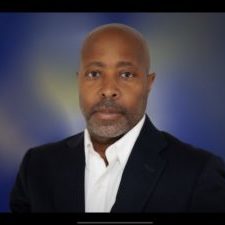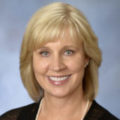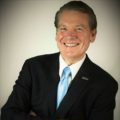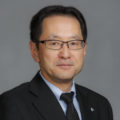
Eric McGriff,
Founder & President,
Pinnacle Advisory Services
The COVID-19 pandemic, economic shutdowns, social unrest and a stormy political environment amid a presidential election — there’s no doubt that 2020 will go down as one of the most challenging years in U.S. history, for both individuals and corporations.
In interviews with several Monitor 100 leaders, I invited them to think back to March of 2020 as we were starting to get a good look at the COVID-19 pandemic and potentially what lay ahead. What were their thoughts at that time and how did they prepare their organizations for what was to come?
“March 2020 seems like a long, long time ago. Many uncertainties, but we had a few priorities. No. 1 was employees’ health. In order to protect our employees, we started working from home mid-March. No. 2 was to support the customers. We saw an increase in requests for deferral. We immediately kicked off the 60- and 90-day deferral program. The No. 3 priority was right sizing.

Unfortunately, due to new business volume decreases, we were required to conduct a staff reduction. That was a tough time for everyone,” Yoshinori (Josh) Shimono, president of Canon Financial Services, says.
David Lee, CEO of North Mill Equipment Finance, shared a perspective from someone personally impacted by COVID-19: “Early March of 2020, I had COVID. I was sick for a day. Twenty-four hours later, I was perfectly fine. It changed my outlook. Rather than living in fear, I became proactive. That probably resonated throughout the company in terms of our aggressiveness in capturing market share,” Lee says. “One of our philosophies is to always keep our leverage low. We keep it lower than a lot of our competitors because I have found that the opportunity to make strategic gains comes during periods of crisis. Those who have less leverage generally have more flexibility. We slowed down originations for about a month. By May, we were almost on budget. In June, we were back on budget.”

Laurie Bakke, president of Western Equipment Finance, presents a perspective from COVID-19’s ground zero: “Pre-COVID, approximately 30% of our team worked remotely. By mid-February, we had restricted business travel and evaluated the impact of working remotely for our entire team. By March, we realigned job functions, department responsibilities, created a COVID task force and proactively went out to our customer base to communicate our payment deferral process. We quickly transitioned the entire team to working remotely and held weekly — if not almost daily — Zoom calls to make sure everybody stayed connected.”
Jule Kreyling, president of Atlantic Union Equipment Finance, comes from a perspective of having just hired a new staff in the months leading up to the beginning of the COVID-19 pandemic:

“That was an interesting time for us because in March we had only been at the bank for about five months. We had our annual kickoff meeting in March. That meeting ended on a Wednesday and on Friday the bank put a travel ban in place. Shortly after that, we started working remotely.
“I was concerned, not only for our customers, but also for our business — all these people we had just brought over to a new organization, only to have COVID happen. If it turned out to be as catastrophic as it seemed it could be, then there was real uncertainty about the future. Will Atlantic Union stand behind us? Maybe they choose to exit the business. Obviously, they did not. They made a commitment, and they kept their word every step of the way,” Kreyling says.
Raj Kalathur, president of John Deere Financial Services, weighs in:

“When COVID-19 hit, John Deere Financial’s objective was to keep people safe and keep operations running to meet our customers’ and dealers’ needs. We implemented remote working arrangements for most of our employees, modified facility plans emphasizing a safe and healthy environment in the office and invested in virtual tools and training. We established relief programs to assist our customers in keeping their operations running during this uncertain time. We made additional liquidity available for our dealers so they could stay financially strong through this period. Empowered employees rapidly deployed digital solutions to expedite the account modifications needed to provide our customers with peace of mind.”
Rising to Challenges
Of the many obstacles posed by the COVID-19 pandemic, I wondered what the

greatest challenges were for each of these organizations.
“The downsizing,” Shimono says. “Out of our total staff of 280, I am sorry to say, we closed the positions of 25, almost 10%.”
“I would say managing the fear factor,” Lee says. “Employees are going to get extremely nervous. What does this mean for me? Am I going to get laid off? Am I going to get furloughed? One of our core philosophies is to be completely transparent with our employees. We were fortunate in that not a single employee was laid off, no one had their compensation reduced and no one was furloughed. In fact, by June or July, we were hiring. Once people saw that we were hiring, a lot of fear was relieved.”
“Our greatest challenge was the immense pressure we put on our team members,” Bakke says. “With the entire team working to help our customer base, the pressure to process the thousands of contract modifications was incredibly demanding. The emotional fatigue from the impact of COVID-19 was far-reaching.”
As the saying goes, every cloud has a silver lining, which was different for each organization.
“The silver lining for us was that we gained a lot of market share and deeper relationships with referral partners that continues today,” Lee says. “We were quite fortunate from that standpoint.”
“Our silver lining was demonstrated through the support and cohesiveness within our teams as they worked alongside each other to provide solutions during such an unprecedented time,” Bakke says.
“Unlike most of our peers, we did not have a mature legacy portfolio to deal with; we kind of had a clean slate,” Kreyling says. “We had a 60-to-90-day window where we were there for our customers. We were able to fund and, on the capital market side, take advantage of when the interest rate markets got upside down and the rates went almost to zero. So, during that period, we built the portfolio much quicker than we otherwise would have been able to. That was a real silver lining for us.”
“Prior to the pandemic, John Deere Financial had already started on a more focused digital journey aided by our organization transforming to agile product teams,” Kalathur says. “The pandemic accelerated this journey because our customers and dealers needed more digital options. We delivered differentiating solutions to our customers and the channel faster than ever before.”
Forging the Future
The key to any organization is its relationship with people — including employees and customers — and its internal processes and technologies. I wondered how the pandemic impacted each of these organization’s relationships, processes and technologies.
“Our IT department’s ability to rapidly deploy technology and coordinate the mass movement of our personnel within the bank and finance company demonstrated the heavy reliance on a select group of team members,” Bakke says. “Their adaptability and creativity enabled a quick and seamless transition.”
“We were more productive in terms of what we were able to get done working remotely. But I do think people miss the office interaction,” Kreyling says. “Particularly, I think people early in their careers probably do miss out by not being in the office to get mentoring and things like that in person.”
“Our employees have weathered this crisis as one team,” Kalathur says. “The relationships built during this time are different than before because co-workers were getting a look at one another’s home lives while working remotely. This gave each employee a different viewpoint and a different level of appreciation of everyone’s situation. It brought inclusion to the forefront.”
“First, we now know that we can operate the daily business remotely,” Shimono says. “Once we started working remotely, our team members showed great productivity and engagement. These findings lead us into a new era. We need to invest in IT infrastructure and technology, which include RPA (robotic process automation), machine learning and big data. CFS has an experienced and competent staff. I really appreciate their hard work and the commitment.”
Stability is an Illusion
Many people feel that rather than returning to normal post-pandemic, there is a “new normal” that will be established. I wondered if these leaders agreed with this and how they feel the new normal might differ from the old.
“As I like to say, stability is an illusion,” Lee says. “The only thing that is stable is change. So, to me, there is never a normal. Therefore, there cannot be a new normal. People must adapt.”
“Yes, I completely agree that there will be a new normal,” Shimono says. “In September, gradually, we are going back to the office. But not five days a week, just two days a week. I think this is a huge change. I would say this is a new normal.”
“I feel the only constant is change,” Kalathur says. “The pandemic has reinforced the need to be adaptable, with agile processes and empowered employees who are user-centric. Settling into any type of ‘normal’ really is not a good recipe anymore with the pace of change.”
“From a business development standpoint, the new normal will continue to see a reduction in travel as well as increased utilization of technology,” Bakke says. “Throughout 2020, the workforce demonstrated its ability to be equally as productive working remotely. A hybrid remote working policy will create a new environment for the future.”
I have been hearing from clients that having a portion of the workforce working remotely has greatly expanded the ability to attract top talent. Bakke spoke to the hybrid approach that many seem to be taking.
“While our preference is to have team members in our home office or satellite offices, that’s not always possible,” Bakke says. “When recruiting, talent and cultural fit determine the location of the candidate, which is why 30% of our team is located throughout the United States. One thing for certain is that working remote comes up every time you talk to a candidate.”
Lee presented an uplifting take on changes he expects to see as we exit the pandemic: “I think people need personal connection. I think you are going to see a resurgence in human-to-human interactions, which will be good for the economy, which will be good for the equipment finance sector. We are going to start to see things like buses and hotel occupancy being in demand again. I feel fortunate that we will be able to participate in helping to finance a lot of that re-engagement of the economy.”
Post-Pandemic Priorities
And as we get into the latter half of 2020, I inquired about what these leaders see as their key priorities.
“Our most important priority is maintaining our culture. This has always been and will continue to be our No. 1 priority,” Bakke says. “We understand that over time an unintended shift in an organization’s culture can impact its identity.”
“Staying on the same path, being both productive and diligent,” Kreyling says. “Generate new business opportunities to lead us into 2022.”
“Our people will continue to be a priority,” Shimono says. “In general, I expect a tremendous business and economic recovery in the second half. We will see an increase in opportunities due to the U.S. stimulus and infrastructure packages. This will be our tailwind.”
“North Mill has grown tenfold in the last three years, and we have found many referral partners that are quite sophisticated and have good processes,” Lee says. “We will continue to partner and become more integrated with some of those referral partners and develop long-term strategic relationships. That will drive a lot of our volume.”
“Institutionalize key pandemic learnings into our business practices going forward and accelerate our digitalization journey,” Kalathur says. “Engaging our employees and investing in our ability to continuously learn and adapt.”
No categories available
No tags available